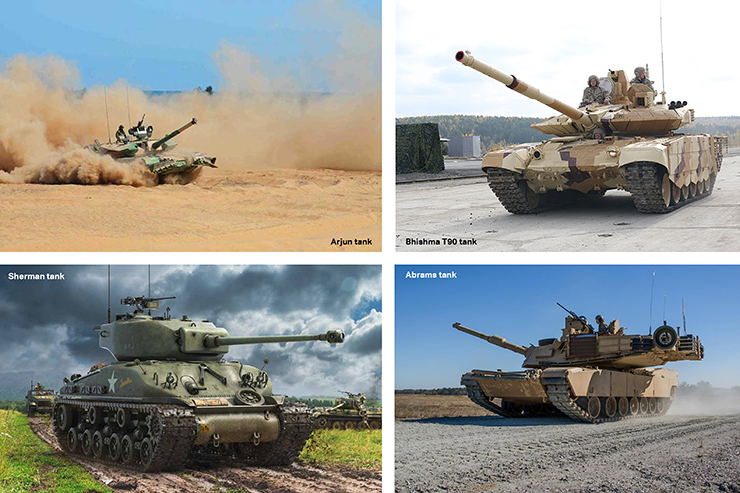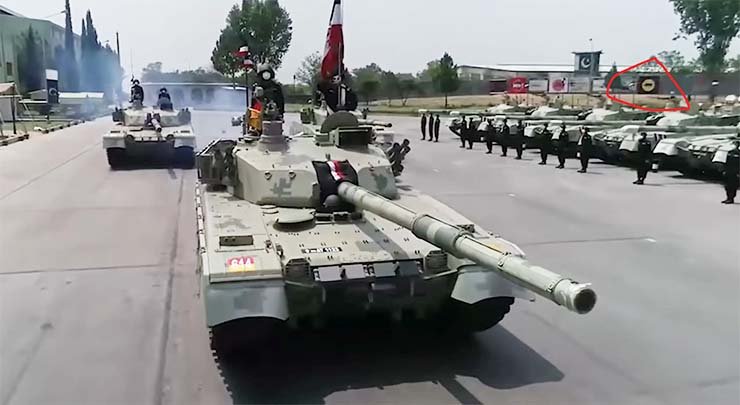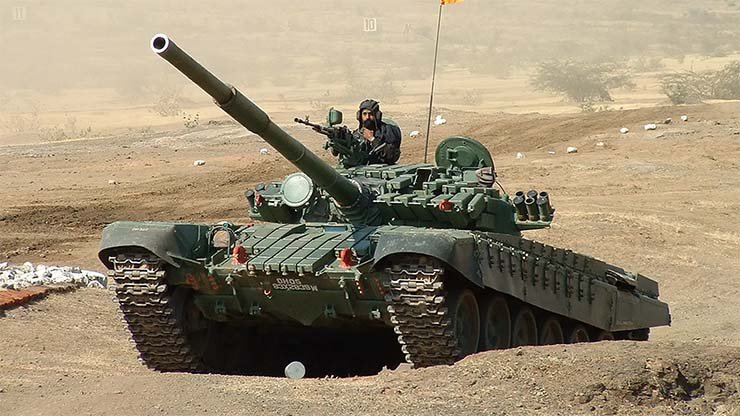
Guess what Arjun, Bhishma, Abrams, Panzer, Patton, Stuart, and Sherman have in common? Well, all of them were battle tanks named after legendary historical figures. Throughout history many tanks have been named after famous generals particularly those associated with military success and innovation.
The Americans lead the pack with the maximum tanks named after wartime Generals like Abrams, Patton, Walker, and Sheridan. Here are a few examples:
For instance, the M4 Sherman tank is named after General William Tecumseh Sherman, a hero of the American Civil War known for his aggressive tactics. The M48 Patton series of tanks are named after General George S. Patton, a highly decorated commander known for his armoured warfare expertise and leadership in World War II. Likewise, M1 Abrams tanks are named after General Creighton Abrams, who served in World War II and Vietnam and advocated for improved armour protection for soldiers.
One of the best main battle tanks in the world, the M1 Abrams is known for its firepower, armour, and mobility. One of the most heavily armoured tanks in the world, the M1 Abrams tank has served as the main battle tank in the US military since the early 1980s. The M1 Abrams has seen action in the Gulf War, Iraq War, Afghanistan and the Yemeni Civil War where it proved to be an effective and durable tank.
The British named their tanks with the letter C for instance Covenanter, Crusader, Cavalier, Cromwell, Comet, Centurion, Chieftain, Challenger I and Challenger II after Sir Winston Churchill who twice served as Prime Minister of the United Kingdom, from 1940 to 1945 during the Second World War.
The Germans on the other hand have named their tanks after cats such as the Tiger I, Tiger II, Panther, Leopard I, Leopard II, Puma or Lynx.
The Russians used numbers not names. The names of Russian tanks started with a T followed by a number for example the T-14 Armata, T34, KV 1, T 55, T62, T-72B2, T-72B3, T-72B3M, T-80UE, T-80UK, T-80UM or T-90. The number in the T series is the year in which the tank was proposed.
T-34 is often associated with Marshal Georgy Zhukov, who effectively utilised them in World War II, T-72 is associated with General Dmitry Lvov, one of its developers while T-90 Vladimir is unofficially named after Vladimir Putin.
Many American tanks are named after Generals like Abrams, Paton, Walker, and Sheridan. For instance, the M4 Sherman tank is named after General William Tecumseh Sherman, a hero of the American Civil War known for his aggressive tactics. The M48 Patton series of tanks are named after General George S. Patton, a highly decorated commander known for his armoured warfare expertise and leadership in World War II
In India the third generation main battle tank developed by the Defence Research and Development Organisation (DRDO) is named after Arjuna, the legendary warrior prince who was the main protagonist of the Indian epic poem Mahabharata. Likewise the Bhishma is an Indian variant of the Russian T90S tank tailored specifically for Indian terrain with the help of Russia and France. T-90 Bhishma, is among the most powerful tanks in the world. India acquired the T-90 Bhishma tanks in 2001 and moved its premier T-90 battle tanks to eastern Ladakh in the aftermath of the Galwan clash between Indian and Chinese troops.
Others such tanks that draw inspiration from mythology include the Israeli Merkava, named after a chariot mentioned in the Bible. Merkava Mark 5 next-generation main battle tank, also known as “Barak,” which translates to “lightning” in Hebrew is currently the backbone of Israel Defense Forces.
The Al-Khalid Main Battle Tank (MBT) forms the backbone of Pakistan Army’s Armoured Corps. The Al-Khalid is equipped with a 125mm smoothbore main gun, capable of firing a variety of rounds and the 9M119M Refleks (NATO reporting name AT-11 Sniper) anti-tank guided missile, a tandem warhead missile with a range of five kilometres, also fired through the main gun. The main gun is capable of shooting six to eight rounds per minute. The tank is equipped with a laser rangefinder and a computerised fire control system, with the main gun stabilised on a dual-axis, enabling it to shoot accurately on the move.

Labelled as “king of battlefield” the Al Khalid (Eternal King) tank has the ability to effectively defend itself against nuclear, biological and chemical attacks. It’s named after Khalid ibn al-Walid, also known as “Sword of Allah”. He was a companion of the prophet Muhammad and one of the most successful military commanders in history. He was particularly known for his military tactics, strategic planning, and leadership skills as well as use of mobile cavalry warfare, which allowed him to outmaneuver larger and heavily armoured enemy forces. His military achievements contributed significantly to the expansion of the Islamic empire.
The Polish PT-91 Twardy (Polish for tough or resilient) can accomplish a maximum road speed of 60km/h. In the low gear, the vehicle can travel with 7km/h speed during low-speed maneuvering. It has been designed to ford to a depth of 1.2m and 5m using torsion bar suspension. The Twardy can also cross rivers with water obstacles of 1m to 2m in depth without any preparation.
True to its name K2 Black Panther is a powerful main battle tank designed and manufactured in South Korea. Known for its firepower, mobility, and survivability, it is considered one of the most advanced main battle tanks in the world.
In India the third generation main battle tank is named after Arjuna, the legendary warrior prince. Likewise the Indian variant of the Russian T90S tank – one of the most powerful tanks in the world – is called Bhishma, one of the main protagonist in Mahabharata
Unlike some tank names with specific historical ties, the origin of the “Panzer” name for German tanks is actually quite straightforward! Leopards hold diverse meanings across cultures, often associated with power, stealth, beauty, and mystery. In ancient Greek mythology, they were linked to the god Dionysus, symbolising untamed power and nature’s wildness.
The word “Panzer” comes directly from the German word for “armour.” The early German tanks of World War I, like the A7V, were referred to by more descriptive terms like “Sturmpanzerwagen” (armoured assault vehicle). However, after WWI, due to the Treaty of Versailles’ restrictions on armoured vehicles, development continued under secrecy. To disguise their true purpose, early prototypes were given codenames like “Landwirtschaftlicher Schlepper” (agricultural tractor) and “Großtraktor” (large tractor). When Hitler openly authorised Panzer divisions in the 1930s, the simple and descriptive “Panzer” became the official designation.
Today, “Panzer” remains the term used for German tanks, both historically and in modern reference. It’s not a specific tank name but rather a category designation encompassing all German armoured fighting vehicles. This emphasis on mobility and offensive power further solidified the association of “Panzer” with German tank forces. So, while “Panzer” doesn’t hold a hidden story of bravery or specific events, it effectively conveys the core purpose and historical significance of these armoured vehicles within the German military.
German Leopard tanks symbolise agility, mobility and stealth. Their powerful engines and advanced suspension systems allow them to efficiently navigate across all types of terrain. In terms of stealth, Leopard tanks are designed with a low profile, which reduces their visibility on the battlefield. Their advanced armour technology and fire control systems enhance their survivability and combat effectiveness. On the whole the Leopard tanks are regarded as some of the most capable and versatile main battle tanks in the world.

The Leopard 2 is known for its durability and combat effectiveness, making it a formidable asset in modern armoured warfare. One of the most advanced tanks in service with the German Army as well as 13 other European and non-European countries.
The name “Stridsvagn” is Swedish for “battle tank.” It’s a combination of two Swedish words: “strid,” meaning battle or combat, and “vagn,” meaning vehicle or carriage. So, literally, “Stridsvagn” means “battle wagon,” which is a perfect description for a main battle tank. This naming convention is similar to that used in other countries, such as Germany (Panzer) and Russia (T-34, T-72, etc.), where the name of the vehicle often includes a designation related to its role or function.
Sometimes, the seemingly simple names hold deeper meanings. The British Centurion, named after Roman soldiers known for their discipline and endurance, reflects the tank’s intended role as a reliable workhorse. Similarly, the American M1 Abrams honours General Creighton Abrams, known for his innovative leadership and focus on soldier protection. These names pay homage to the human element behind these formidable machines.
It’s important to remember that battle tanks represent much more than their names. They are symbols of innovation, military might, and the ever-evolving landscape of warfare. Their names may be diverse, but they all share a common purpose: to serve as powerful tools on the battlefield.
So, the next time you hear the thunderous roar of a battle tank, remember that it’s not just a machine with a name. It’s a rolling piece of history, carrying the echoes of past battles, national pride, and the ingenuity of engineers. The name might be just a word, but it reveals a deeper story waiting to be discovered.
–The writer is a seasoned media professional with over three decades of experience in print, electronic, and web media. He is presently Editor of Taazakhabar News. The views expressed are of the writer and do not necessarily reflect the views of Raksha Anirveda















